The best fabric for T-shirts depends on use, but cotton, polyester, and blended fabrics like cotton-poly or tri-blends are the top choices for comfort, durability, and performance.
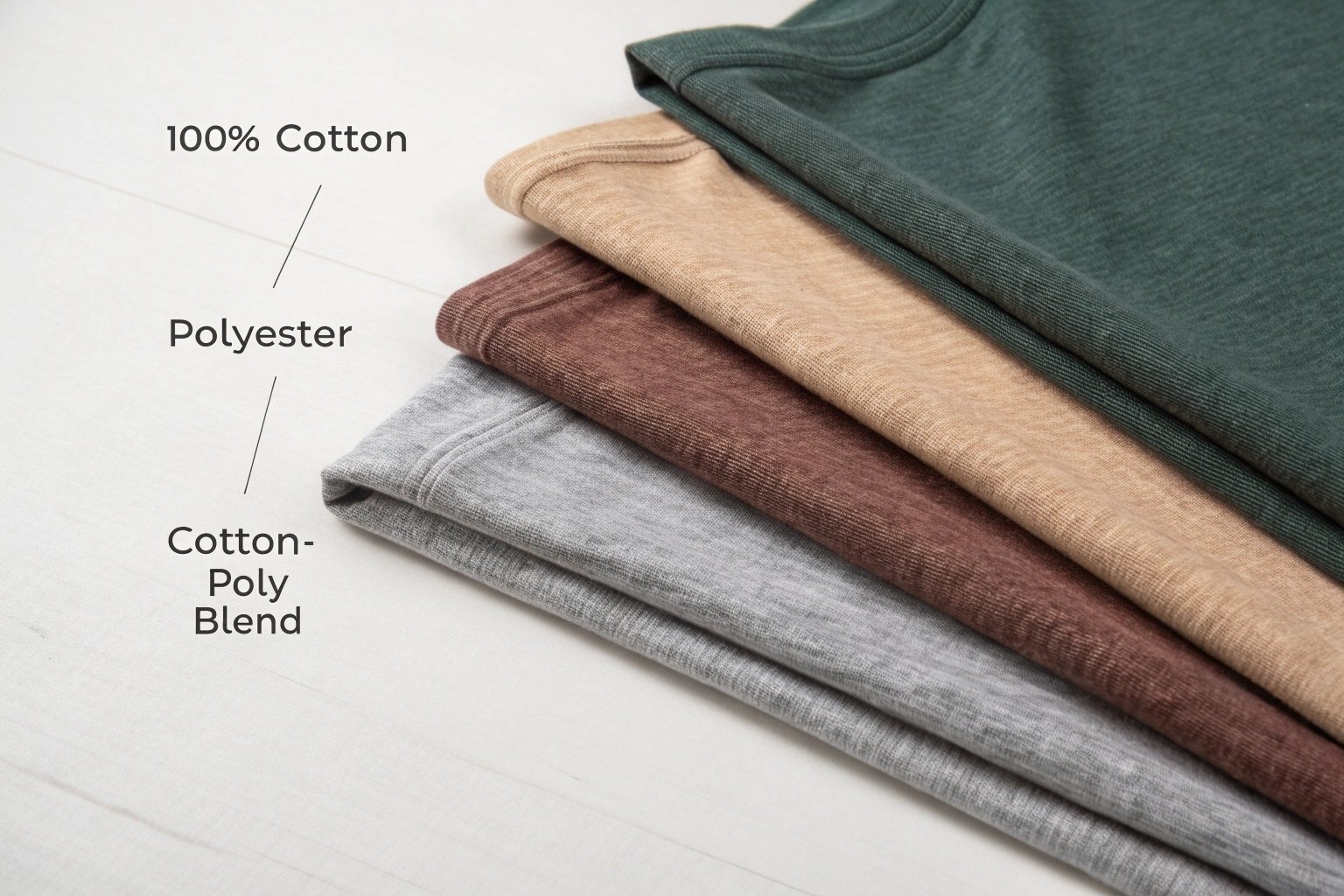
Fabric selection plays a vital role in how a T-shirt feels, fits, and performs over time. Whether you’re creating a fashion line, a sports tee, or a promotional product, knowing the difference between materials helps ensure long-term customer satisfaction and brand consistency. Here’s a breakdown of key fabrics, their strengths, and where each fits in modern T-shirt design and production.
Why does fabric matter for T-shirts?
Fabric choice can make or break a T-shirt’s feel, fit, and longevity.
The fabric affects how soft, breathable, stretchable, and durable a T-shirt is, as well as how it holds color, resists wrinkles, and reacts to washing.
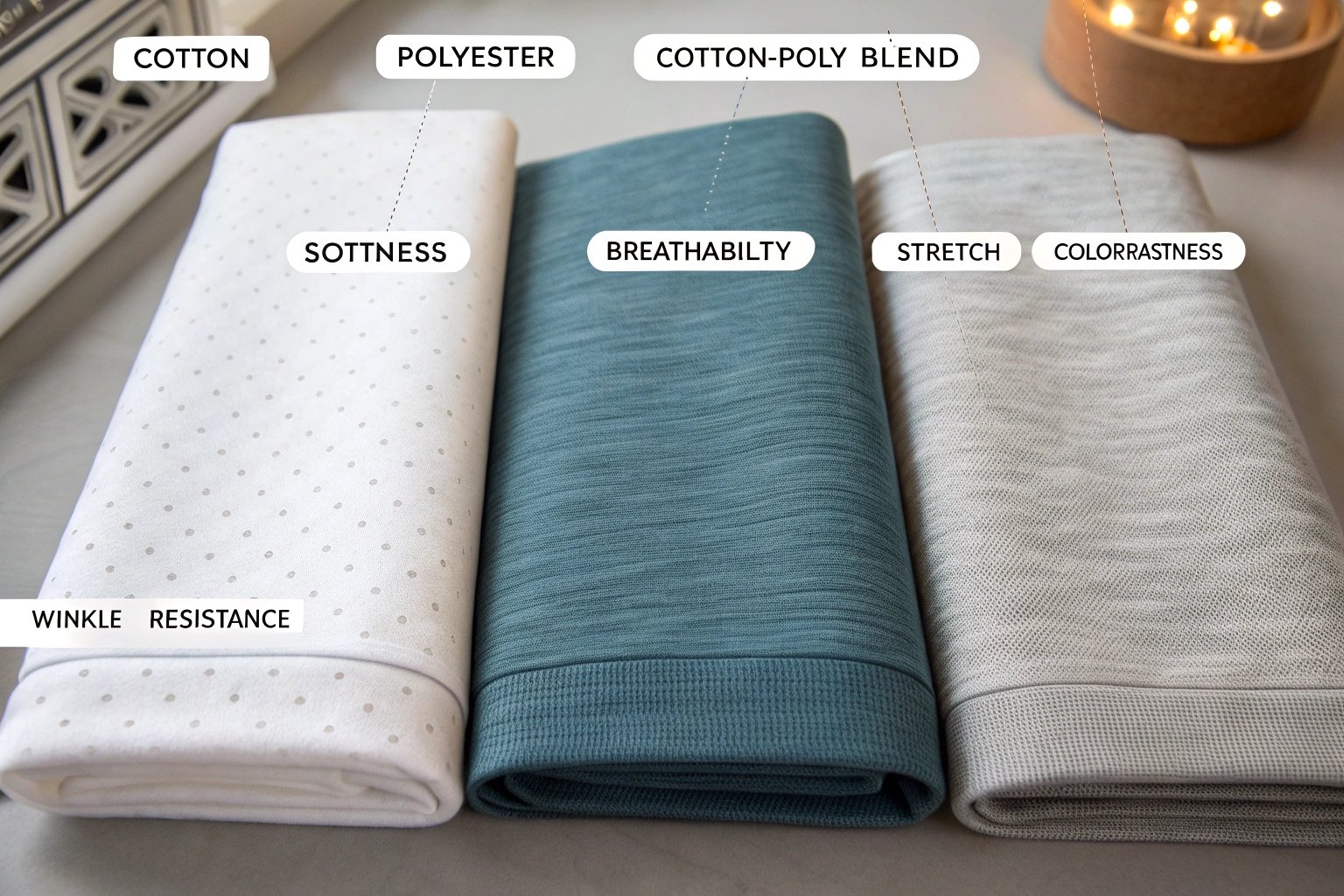
T-shirts made from different materials will perform very differently even if they look identical on the hanger. Natural fibers like cotton provide softness and breathability but may shrink or fade over time. Synthetics like polyester dry faster and resist wrinkles, but may lack airflow. Blends offer balance between these qualities. For fashion brands or B2B buyers, aligning fabric choice with the product’s purpose—such as everyday wear, activewear, or luxury basics—can reduce return rates and increase positive customer feedback.
What is cotton—and why is it popular?
Cotton is a classic, but not all cotton is created equal.
Cotton is a natural fiber known for its softness, breathability, and comfort, making it a favorite for everyday T-shirts, especially in hot weather.

Cotton remains the most widely used fabric in T-shirt manufacturing. It’s breathable, gentle on skin, and absorbs dye well. However, the quality of cotton can vary greatly:
| Type | Features |
|---|---|
| Regular Cotton | Affordable, soft, but may shrink |
| Combed Cotton | Smoother and stronger |
| Ring-Spun Cotton | Softer, tighter weave |
| Organic Cotton | Eco-friendly, chemical-free |
While cotton feels great, its high absorbency can trap sweat and make it dry slowly. It also wrinkles easily and may shrink unless pre-treated. For premium or eco collections, organic and ring-spun cotton are often preferred due to better texture and durability.
Is polyester good for T-shirts?
Many associate polyester with cheap fabric—but that’s outdated thinking.
Polyester is a synthetic fiber that resists wrinkles, holds shape, and dries quickly, making it ideal for sportswear or budget-friendly T-shirts.
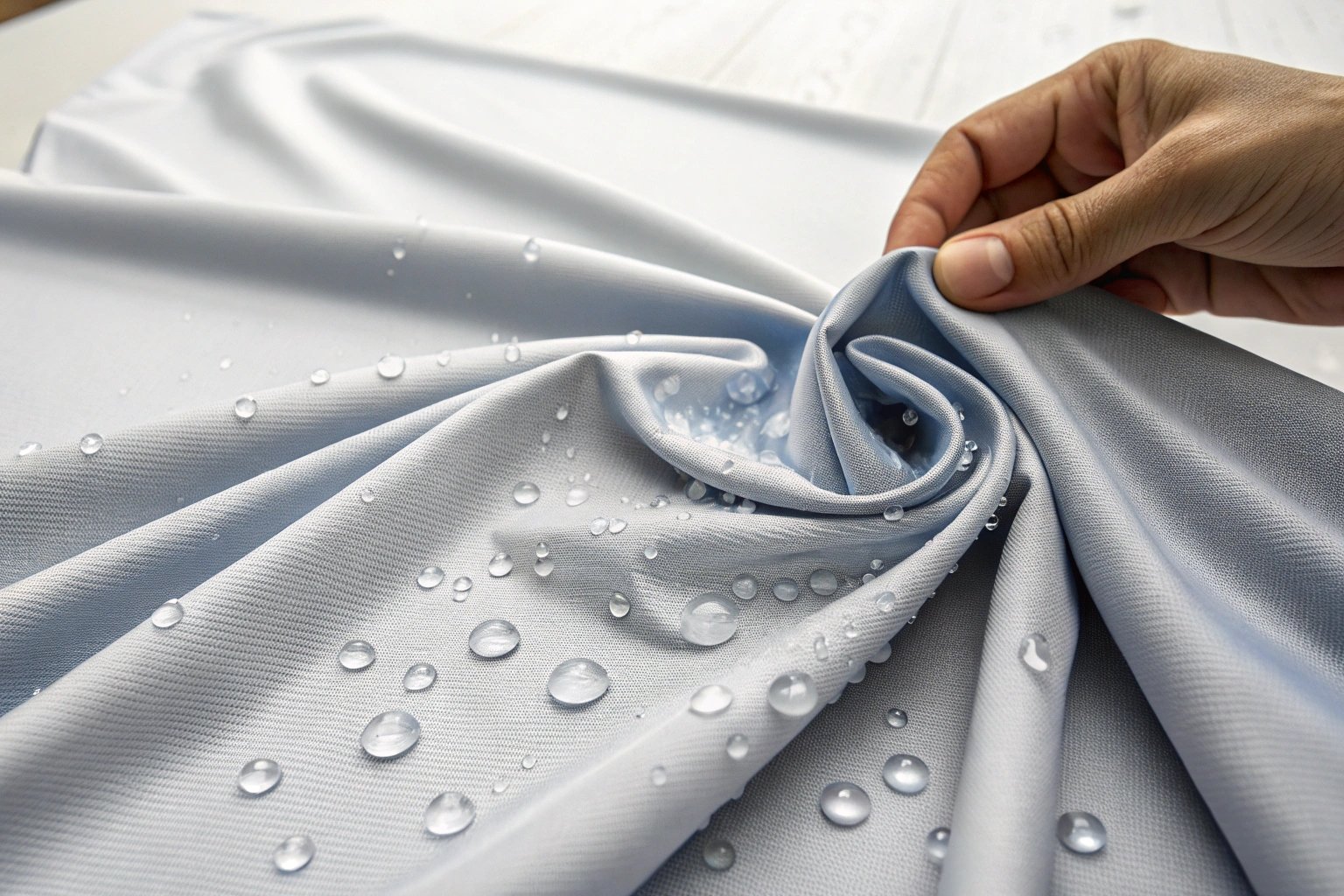
Modern polyester has improved significantly with technical finishes that reduce shine and add softness. It’s widely used for sports, uniforms, or low-maintenance apparel. Polyester dries fast, resists shrinking, and holds print colors longer—especially for sublimation printing. However, it has lower breathability compared to natural fibers, and pure polyester can retain odor if not treated. For activewear and performance collections, polyester offers unmatched functional benefits.
What are cotton-polyester blends?
Blends often give you the best of both worlds.
Cotton-polyester blends combine the breathability of cotton with the durability and wrinkle-resistance of polyester, creating a balanced fabric for everyday use.
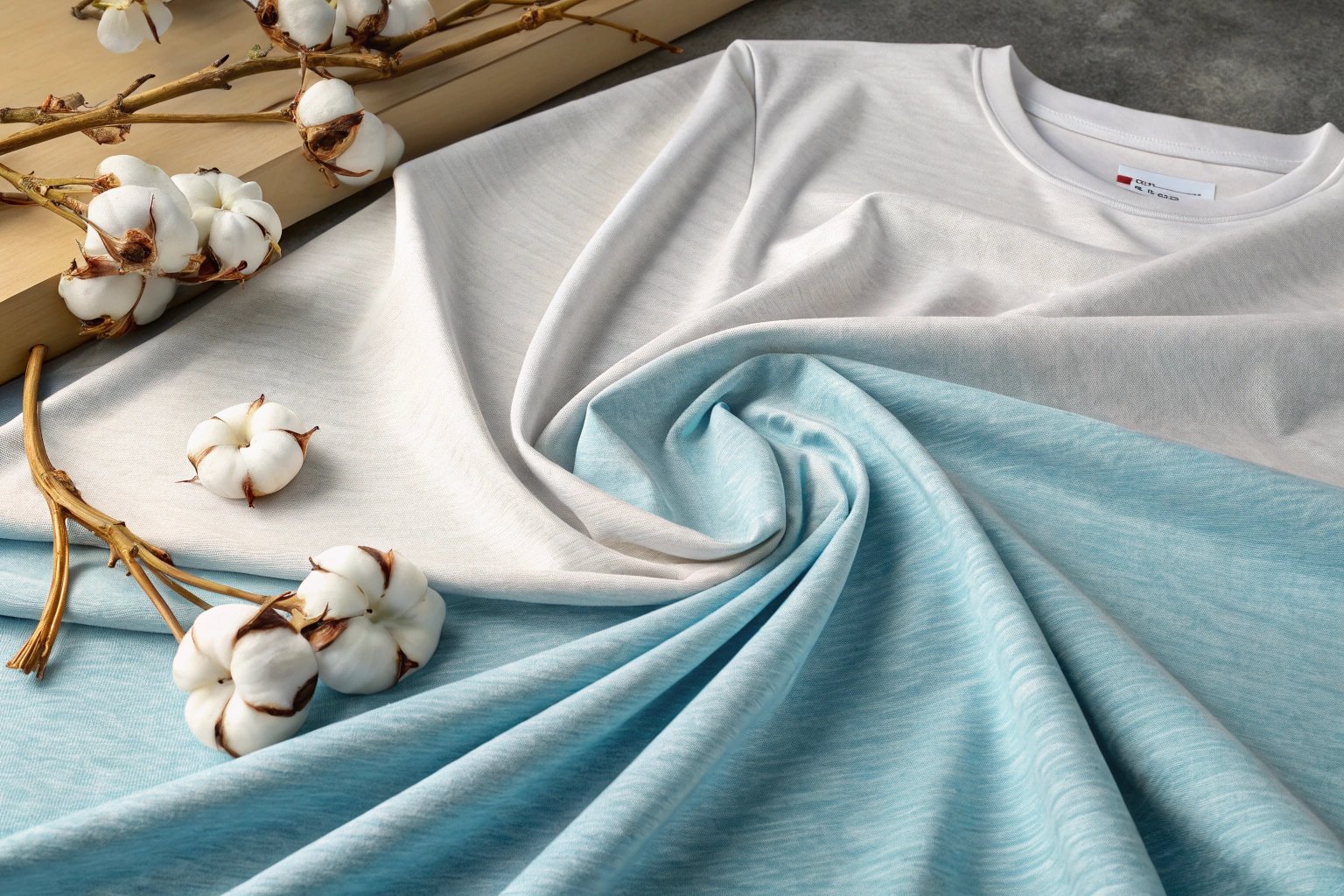
Blended fabrics are ideal for brands looking to balance cost, comfort, and longevity. These blends are used in school uniforms, casual fashion, and promotional T-shirts due to their colorfastness and reduced shrinkage. Common blends include:
| Cotton Ratio | Feel | Durability | Shrinkage |
|---|---|---|---|
| 60/40 | Soft, breathable | High | Low |
| 50/50 | Balanced feel | Very high | Very low |
Blends reduce pilling, wash well, and provide a familiar cotton touch with technical performance. For mass production or mixed-climate markets, cotton-poly blends are a dependable choice.
What are tri-blend fabrics?
Tri-blends are the new premium standard.
Tri-blend fabrics mix cotton, polyester, and rayon, offering a super-soft feel, vintage drape, and lightweight comfort ideal for premium fashion T-shirts.
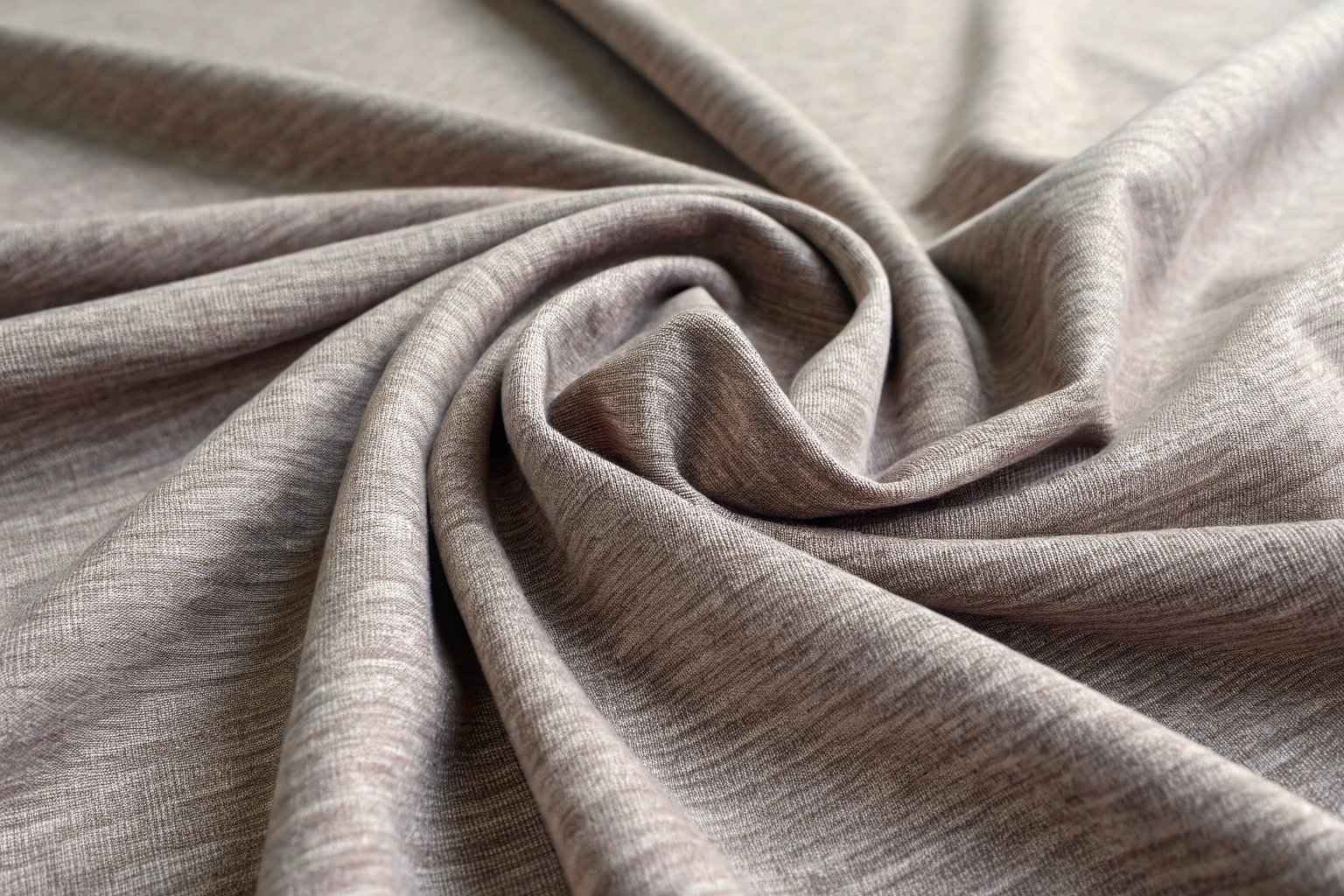
A typical tri-blend ratio is 50% polyester, 25% cotton, and 25% rayon. Rayon adds exceptional drape and a silky texture. These shirts feel lightweight and worn-in, with a soft touch that improves after each wash. Tri-blends are ideal for premium streetwear, boutique fashion, and lifestyle apparel. However, they can be prone to stretching or tearing under heavy use and are not recommended for industrial wear. Their aesthetic appeal makes them perfect for collections where softness and style outweigh long-term ruggedness.
Is viscose or modal good for T-shirts?
These newer fibers bring softness and sustainability.
Viscose and modal are semi-synthetic fibers made from wood pulp, offering a silky, breathable, and eco-friendly option for premium T-shirts.
Viscose and modal have gained popularity for their soft handfeel and sustainability appeal. Both fabrics drape beautifully and hold vibrant colors. Modal is generally more durable than viscose, making it suitable for upscale basics and women’s fashion lines. While these fabrics are more expensive, they align with modern consumer values around eco-consciousness and quality. Care instructions matter—these fibers prefer cold washing and air drying to maintain longevity. For luxury brands or niche collections, modal blends add a refined edge to T-shirt offerings.
How do I choose the best fabric for my T-shirts?
It depends on who’s wearing it and why.
Choose cotton for comfort, polyester for performance, blends for balance, tri-blends for softness, and modal/viscose for luxury or eco-friendly collections.
Here’s a guide to match fabric to function:
| Need | Best Fabric Choice |
|---|---|
| Budget-friendly | Cotton-poly blend |
| Premium softness | Tri-blend or modal |
| Sports/activewear | Polyester or poly-cotton |
| Hot weather wear | 100% cotton or viscose |
| Print quality | Polyester (for sublimation) |
T-shirt fabric selection is not one-size-fits-all. For bulk orders, it’s critical to test samples for post-wash behavior, especially when printing is involved. Matching the right fabric to the right audience helps reduce complaints and enhances product reviews.
Conclusion
Choosing the right T-shirt fabric depends on your market, purpose, and price point. Cotton remains king for comfort, polyester leads for performance, and blends bring balance. Tri-blends and modal elevate collections with premium texture and drape. When fabric fits function, every T-shirt becomes your best seller.

